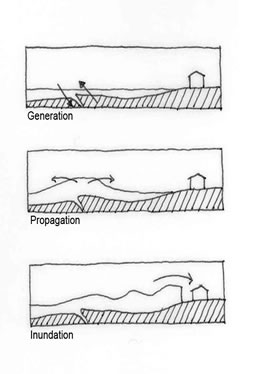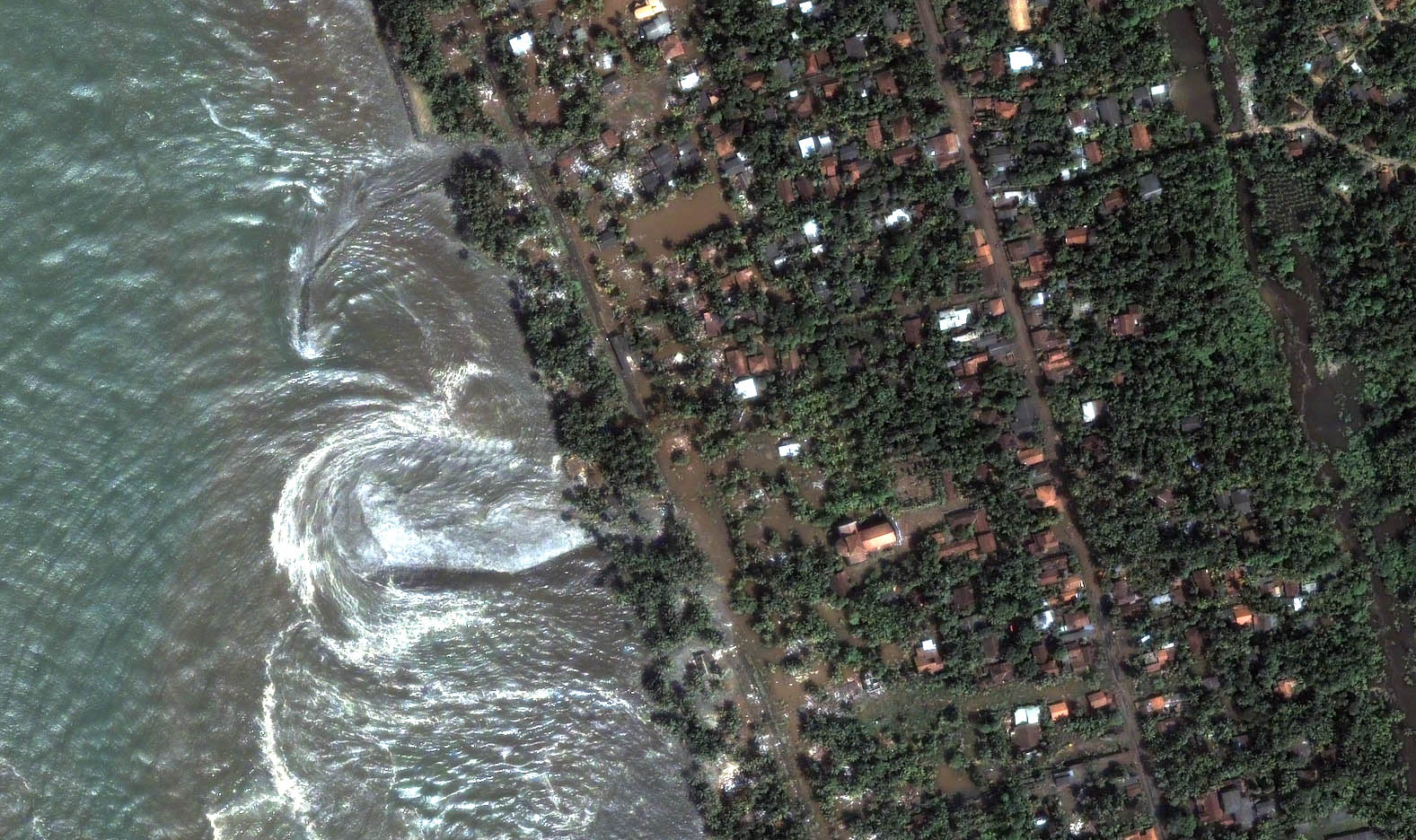

Orientation of Coastline to Wave- The configuration of the coastline, the shape of the ocean floor, and the characteristics of advancing waves play important roles in the destructiveness of the waves. A wave may be small at one point on a coast and much larger at other points. Bays, sounds, inlets, rivers, streams, offshore canyons, islands, and flood control channels may cause various effects that result in greater damage than many people would expect. Offshore canyons can focus tsunami wave energy and islands can filter the energy. The orientation of the coastline determines whether the waves strike head-on or are refracted from other parts of the coastline.
Drawdown- Five to 10 minutes before it strikes, a tsunami usually gives a powerful warning that's hard to miss from the shore. This visible indication is the recession of water otherwise known as a drawdown. The drawdown is caused by the depression preceding the advancing large inbound wave crest. "If you're standing on the beach, the water can recede all the way out to the horizon," said Brian Yanagi, Hawaii's program specialist for earthquakes and tsunamis. This rapid drawdown can create strong currents in harbor inlets, pull boats and ships out to sea, overturn or sink vessels, and the giant undertow can pull swimmers under
Drawdown and Tsunami wave surge in Sri Lanka (Source: DitigalGlobe)
Rise of Water-However, a drawdown might not occur and instead a rise in water level might be the first indication of an approaching tsunami . The advancing tsunami may initially resemble a strong surge increasing the sea level like the rising tide, but the tsunami surge rises faster and does not stop at the shoreline. Even if the wave height appears to be small, three to six feet for example, the strength of the accompanying surge can be deadly. Waist-high surges can cause strong currents that float cars, small structures, and other debris. Boats and debris are often carried inland by the surge and left stranded when the water recedes.
Definition- Tsunami is Japanese for “harbor wave” pronounced tsoo-nah-mee and is a wave train, or series of waves, generated in a body of water by an impulsive disturbance that vertically displaces the water column. Earthquakes, landslides, submarine volcanic eruptions, explosions, and even the impact of cosmic bodies, such as meteorites, can generate tsunamis. Tsunamis can savagely attack coastlines, causing devastating property damage and loss of life.
Types- Tsunamis are typically classified as either local or distant. Locally generated tsunamis, like the one that occurred recently in Indonesia, have minimal warning times and may be accompanied by damage resulting from the triggering earthquake such as groundshaking, surface faulting, liquefaction, or landslides. Distant tsunamis may travel for hours before striking a coastline.
Speed and Height- In the open ocean, a tsunami may be only a few feet high but can travel up to 500 miles per hour. As a tsunami enters the shallow waters near a coastline, its speed diminishes, its wavelength decreases, and its height increases. The first wave is usually not the largest. Several larger and more destructive waves often follow the first one.


